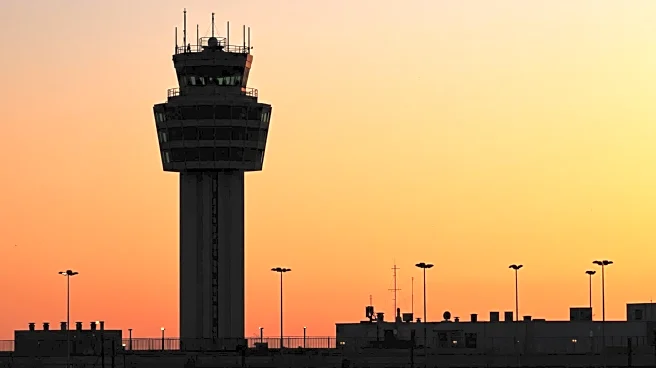What is the story about?
What's Happening?
Transportation Secretary Sean Duffy has criticized his predecessor, Pete Buttigieg, for allegedly lowering the standards for air traffic controller candidates during his tenure. Duffy claims that Buttigieg removed the top tier qualification for candidates scoring above 85% on the Air Traffic Skills Assessment (ATSA) exam, replacing it with a two-tier system. This change reportedly led to increased dropout rates at the Federal Aviation Administration Academy. Duffy has since reinstated a higher qualification tier to better identify top-performing candidates. Buttigieg has denied these claims, stating that the standards for becoming a certified air traffic controller were not changed, and emphasized efforts to increase funding and training for the workforce.
Why It's Important?
The controversy over air traffic controller standards is significant due to its implications for aviation safety and workforce management. Lowering qualification standards could potentially impact the quality and reliability of air traffic control, a critical component of aviation safety. The debate highlights the challenges in recruiting and retaining skilled air traffic controllers, a profession known for high burnout rates. Duffy's actions to restore higher standards aim to address these issues and improve the efficiency of the recruitment process. The outcome of this dispute could affect public confidence in air travel safety and influence future policy decisions regarding aviation workforce management.
What's Next?
Duffy's reinstatement of higher qualification standards is expected to expedite the recruitment process for air traffic controllers, potentially reducing dropout rates and filling workforce gaps. The FAA aims to hire 8,900 new controllers by 2028, a goal that may be influenced by these changes. The ongoing debate between Duffy and Buttigieg may prompt further scrutiny of FAA policies and practices, possibly leading to additional reforms. Stakeholders, including aviation industry leaders and policymakers, will likely monitor the situation closely to assess its impact on air traffic control operations and safety.
Beyond the Headlines
The issue raises broader questions about the balance between maintaining rigorous standards and addressing workforce shortages in critical sectors. It also underscores the complexities of predicting job performance based on standardized testing, as Duffy noted the difficulty in identifying suitable candidates for air traffic control. The situation may prompt discussions on alternative methods for evaluating and training air traffic controllers, potentially influencing future approaches to workforce development in the aviation industry.
AI Generated Content
Do you find this article useful?














